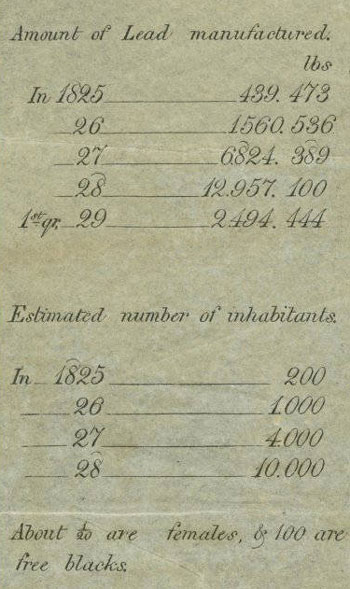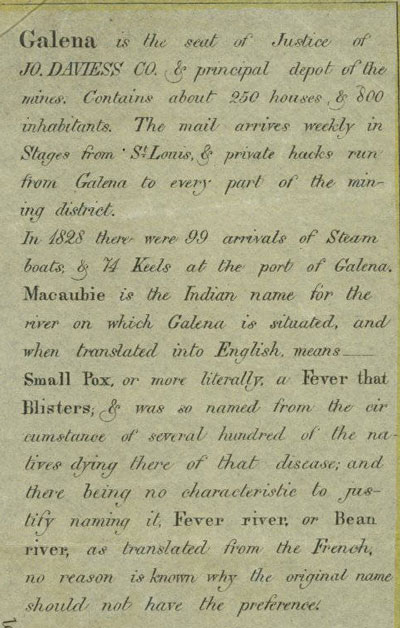Lead District
Galena is the Latin name for the highest quality of lead sulfide from which lead is produced. It was lead that brought people to the Galena area by the thousands during the early nineteenth century.
Miners would obtain a permit to prospect for lead, and then purchase a license to open a mine and extract the ore, which they were required to sell to smelters once a month.
To obtain a smelting license, a $10,000 bond was posted and the smelter agreed to forward on tenth of the lead smelted to the government as a tax.
Miners would come in the spring and leave before the river froze in the early winter, leaving the village desolate. Then the mining superintendent began to insist the mines be worked at least five days a week year round, making Galena a permanent and viable village.

The rapid rise of Galena can be illustrated with the table on the left edge of the map. Production rose from 439,000 lbs in 1825 to almost 13 million pounds in 1828. Galena's lead production would peak about 1840 at 27 million pounds per year.
Likewise the population of Galena grew from 200 in 1825 to over 10,000 in 1828. According to the chart, only 1 in 20 were women, and 100 were free blacks.
The indigenous name for the Galena River was "Macaubie," which translates to "fever with blisters," interpreted by the Europeans as Small Pox, which was brought to the area after the French and Indian War.
There is much lore about the name of the Galena River. The most common early name is the Fever or Fevre River, "fevre" being the French word for bean. The French were the first documented Europeans to arrive in the area. There is no evidence for there being an abundance of beans on the river, which would have given rise to the name. Thus it was likely never called the "Bean River" in any language.


